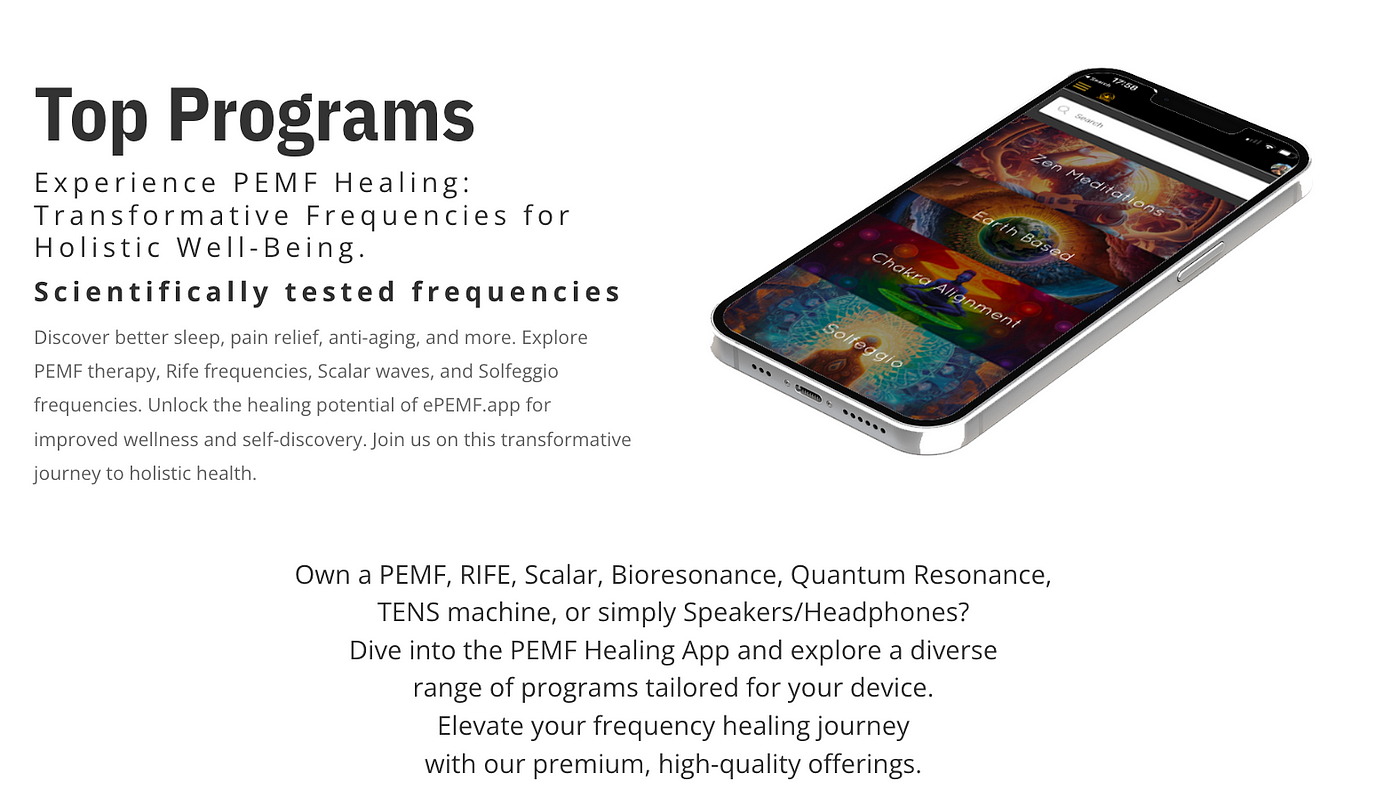NASA’s research and application of Pulsed Electromagnetic Field (PEMF) therapy is an innovative approach to addressing various health challenges, particularly those encountered in space and on Earth. The National Aeronautics and Space Administration (NASA) has been actively involved in researching and supporting the efficiency of PEMF treatments, particularly due to the health challenges faced by astronauts returning from space missions.

NASA’s Interest in PEMF
- Astronaut Health Challenges: NASA’s interest in PEMF was sparked by the health issues faced by astronauts after prolonged space missions. Astronauts often return to Earth feeling sick, experiencing problems with their muscles, bones, cardiovascular system, and overall energy levels. This was attributed to the absence of Earth’s magnetic fields in space.
- Application in Space Capsules: To counteract these health issues, NASA incorporated PEMF technology into their space capsules. This inclusion significantly improved the health and well-being of the astronauts, demonstrating the practical benefits of PEMF therapy in challenging environments.
PEMF Therapy: How It Works
- Basic Principle: PEMF stands for Pulsating Electro Magnetic Fields. It involves using devices to produce pulsating electromagnetic fields, which stimulate the body’s recovery process, thereby reducing pain and restoring normal body functions.
- Wide Range of Applications: PEMF therapy has been found beneficial for a variety of issues, including lack of energy, flu-like symptoms, inflammation, sleep problems, circulation issues, joint and muscle pain, cardiac problems, kidney stones, and weak immunity. It’s also being considered for chronic illnesses like diabetes, Lyme disease, obesity, arthritis, hormonal and neurological problems, and tissue degeneration.

NASA’s Research and Innovations
- Tissue Regeneration: A significant research study by NASA in 2013 showed that electromagnetic fields are effective in repairing injured mammalian tissues and enhancing the growth of new tissues. This four-year research demonstrated improved repair mechanisms and tissue growth, along with higher cellular viability.
- Cartilage Regeneration Device: Innovators at NASA Johnson Space Center have developed a PEMF device specifically for alleviating cartilage degradation in synovial joints. This device promotes the growth of new cartilage and is considered a noninvasive and painless alternative to surgical joint replacement or tissue engineering procedures.
- Genetic Regulation Modification: The therapy modifies genetic regulation at a cellular level, influencing the modulation and resonance of weak metals like calcium, potassium, and magnesium ions. This technology forms the basis for developing novel therapies for cartilage diseases.
- FDA Approval and Medical Applications: PEMF devices have been approved by the FDA for use in stimulating bone regrowth in artificial joint disunions. These devices are now being used for treating cartilage degenerative joint disorders resulting from rheumatism, trauma, or surgery.
NASA’s research into PEMF (Pulsed Electromagnetic Field) therapy includes its application for addressing radiation-related health risks faced by astronauts. This focus is part of NASA’s broader effort to ensure the well-being of astronauts during extended space missions.
Radiation Hazards in Space
- High Exposure Levels: Astronauts spending six months in space are exposed to radiation levels equivalent to about 1,000 chest X-rays. This exposure puts them at risk for various health issues, including cancer, central nervous system damage, bone loss, and cardiovascular diseases.
- Limitations of Dosimeters: While dosimeters are used to measure radiation exposure in space, they cannot gauge the impact of this radiation on the body. NASA’s research aims to understand and measure the physiological, chemical, and biological changes caused by space radiation.
- Importance of Early Detection: Detecting biomarkers for cancer and other radiation-induced conditions is vital. NASA’s research focuses on identifying these risks earlier to implement countermeasures or limit exposure, such as by reducing the duration of space missions.
NASA’s PEMF Research and Radiation Detox
- Research on DNA Damage: A 2002 study by NASA explored how specific DNA sections, called microsatellites, could record radiation damage over time. This research was instrumental in developing methods to measure personalized radiation exposure, which has broader applications beyond space missions.
- Microsatellites as Biomarkers: Microsatellites, often used in forensic and kinship analysis, were identified as effective biomarkers for detecting radiation damage and screening for cancer tumors. This led to the development of the OncoMate MSI Dx Analysis System, an FDA-approved diagnostic test that emerged from NASA’s research.
- Detecting Molecular Damage: NASA’s research has enabled the development of methods to detect molecular damage in human DNA, critical for identifying genetic mutations in cancer tumors and selecting appropriate treatments.
- Application in Cancer Detection: One significant outcome of this research is the FDA-approved OncoMate MSI, a test to determine microsatellite instability in colorectal cancer tumors. This test is essential for diagnosing conditions like Lynch syndrome, which increases the risk of various cancers.
While specific details about PEMF devices in spacecraft for radiation detox are not extensively documented, NASA’s extensive research into understanding and mitigating radiation risks for astronauts is clear. This research not only benefits space exploration but also has significant implications for medical science on Earth, particularly in the field of cancer diagnosis and treatment.

In conclusion, NASA’s involvement and advancements in PEMF therapy signify a major leap in noninvasive medical treatments, with potential applications extending from space missions to everyday medical challenges on Earth.

